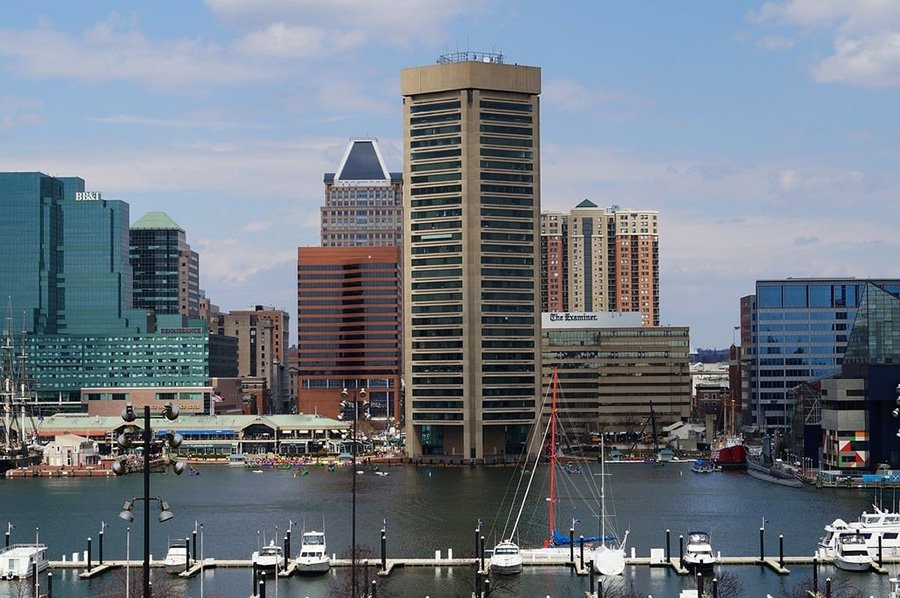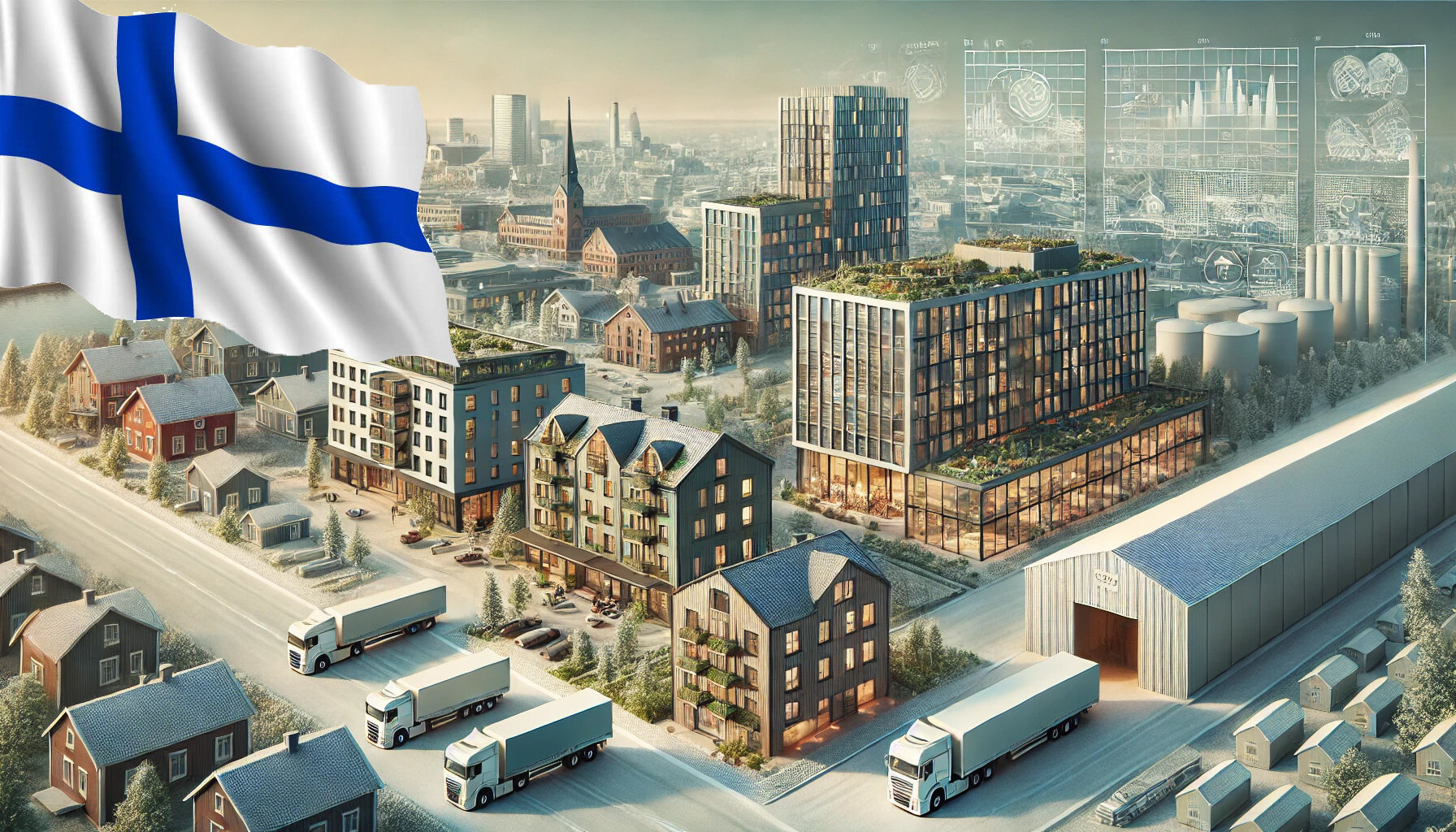читайте также
 More than 40 People Defrauded in Barcelona Rental Scam
More than 40 People Defrauded in Barcelona Rental Scam
 Tourism and Key Sectors Bolster Georgia’s Economic Resilience
Tourism and Key Sectors Bolster Georgia’s Economic Resilience
 Land of Longevity: Japan Sets a New Record for the 55th Consecutive Year
Land of Longevity: Japan Sets a New Record for the 55th Consecutive Year
 Housing in the Netherlands: Rising Prices, Shortages, and New Rental Rules
Housing in the Netherlands: Rising Prices, Shortages, and New Rental Rules
 Private Mortgages in the U.S.: Record Growth and Systemic Risks
Private Mortgages in the U.S.: Record Growth and Systemic Risks
 Hungary Housing Prices Keep Rising as Transaction Volumes Decline
Hungary Housing Prices Keep Rising as Transaction Volumes Decline
Finland Real Estate Market Research 2025: Hotels, Housing, Offices, Retail, and Warehouses

The Finnish real estate market has rebounded after a two-year recession, showing moderate growth. Investors see Finland as a safe haven for capital despite its lower yields compared to global leaders. This report covers key segments, including hotel, residential, office, logistics, and retail real estate, with forecasts for 2025.
The Finnish real estate market has reached its lowest point and, after a two-year recession, is back to moderate growth. Experts forecast market stability in 2025. Although the profitability of Finnish real estate assets remains below global leaders, investors are once again considering Finland a reliable haven for capital, according to a report by CBRE.
The Finnish hotel investment market remained subdued in 2024, with only two major transactions. The most significant was Keva’s acquisition of Sokos Hotel Vaakuna from Osuuskauppa Arina in Rovaniemi in December.
Revenue per available room (RevPAR) increased year-on-year: Helsinki saw an 8.2% growth, while Lapland cities experienced higher gains—Kittilä up 15.3% and Rovaniemi up 14.1%. The rise is primarily attributed to increasing occupancy rates due to growing tourist numbers.
In contrast, RevPAR in Turku remained unchanged, and Tampere saw a 4.1% decline compared to the previous year due to a drop in overnight stays, particularly among foreign guests.
Several new local-brand hotels opened in Helsinki, including the Grand Hansa (224 rooms) in May and City Box Kallio (178 rooms). Bob W expanded with a new aparthotel complex on Kasarmikatu 40. The most significant development was the completion of the Clarion & Comfort hotel near Helsinki-Vantaa Airport, adding 716 rooms.
Major projects under development include an aparthotel and two expansions by Radisson Blu Royal and Scandic, contributing 400 new rooms to the market in 2025.
In 2024, residential real estate investments in Finland increased by 5% to €560 million, making it the second-largest investment sector with a 22% market share. Prime yields in the Helsinki Metropolitan Area (HMA) remained stable at 4.50%, while Turku and Tampere recorded 5.00%, though with lower liquidity.
Old apartment prices declined by 2.8% in HMA, 5.0% in Tampere, and 2.7% in Turku. However, in 2025, prices are expected to rise due to ECB rate cuts, low housing construction volume, and strong urban population growth.
The construction sector hit a low in 2024. The 20,000 new apartments expected in 2025 fall short of the long-term demand of 38,000 per year, and a significant supply increase is not projected until 2027.
Office investments fell 32% to €296 million in 2024. Investor demand focused on prime office assets in key urban markets. Prime office yields rose to 5.50% in CBDs and 6.25% in non-central areas.
Average office vacancy rates in HMA reached 15.4%, with significant reductions in Aviapolis (-1.9%) and increases in Sörnäinen (+5.0%). In 2025, new office space completion is expected to be 33,000 sq. m, below the long-term forecast of 80,000 sq. m per year.
The logistics and industrial sector attracted 27% of total investment in 2024, growing 9% to €677 million. Prime logistics yields remained stable at 5.50%. International capital dominated, comprising 60% of investment volume.
Vacancy rates rose to 5% due to economic challenges. However, prime industrial assets remained in demand, with modern facilities experiencing less than 1% vacancy. Expected economic recovery in 2025 may increase leasing activity and reduce vacancy levels.
Retail investments increased by 17% to €230 million in 2024, accounting for 9% of transaction volume. Prime retail yields in central streets and shopping centers rose to 6.00% and 6.50%, respectively.
Despite economic challenges, retail sales and foot traffic in shopping centers grew. Footfall increased by 4.5%, and total sales rose by 1.5% by year-end. Finland’s retail sector is shifting towards decentralized shopping areas, with growing demand for supermarkets, retail parks, and large-format stores.
The residential sector outpaced industrial real estate as the top investment choice in 2025, with 40% of Nordic investors prioritizing housing. Logistics remains the second most attractive sector (32%), while office investments continue to decline (13%).
Despite past challenges, Finland's real estate market is stabilizing, offering new opportunities in key urban markets and industrial hubs.





